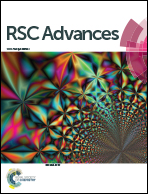Describing the toxicity and sources and the remediation technologies for mercury-contaminated soil
Abstract
Mercury (Hg) is a natural element and its compounds are found as inorganic and organic forms in the environment. The different Hg forms (e.g., methylmercury (MeHg)), are responsible for many adverse health effects, such as neurological and cardiovascular effects. The main source of Hg is from natural release. Nevertheless, with the development of industrialization and urbanization, Hg-contaminated soil mainly influenced by human activities (especially near mercury mining areas) has become a problem. Therefore, much more attention has been paid to the development and selection of various treatment methods to remediate Hg-contaminated soils. This paper presented a systematical review of the recent developments for the remediation of Hg-contaminated soils. Firstly, we briefly introduced the Hg chemistry, toxicity and the main human activity-related sources of mercury in soil. Then the advances in remediation technologies for removing Hg pollution from the soil were summarized. Usually, the remediation technology includes physical, chemical and biological remediation technology. Depending on this, we further classified these remediation technologies into six techniques, including thermal desorption, electrokinetic extraction, soil washing, chemical stabilization, phytoremediation and microbial technology. Finally, we also discussed the challenges and future perspectives of remediating Hg-contaminated soils.

- This article is part of the themed collection: 2020 Reviews in RSC Advances


 Please wait while we load your content...
Please wait while we load your content...